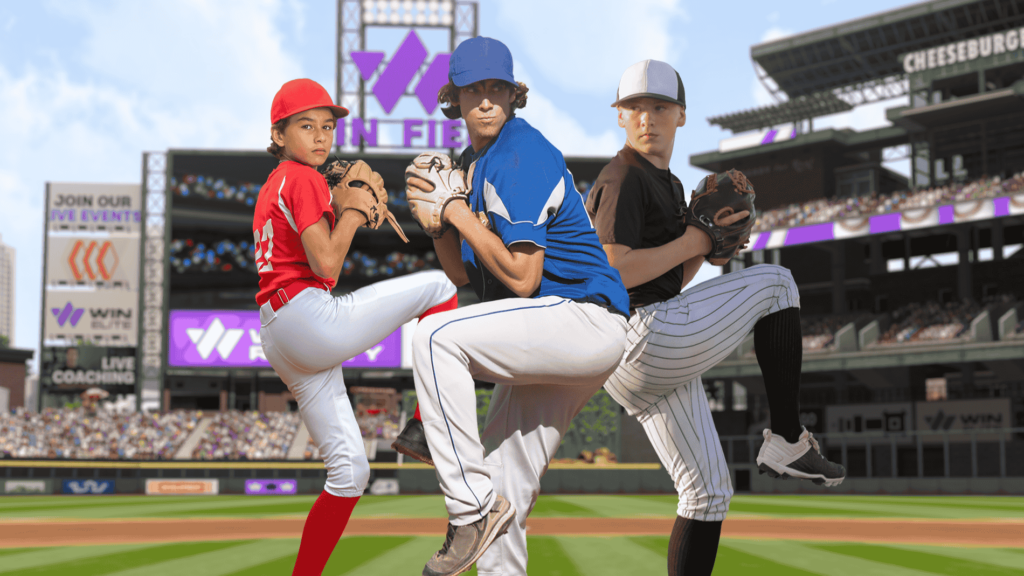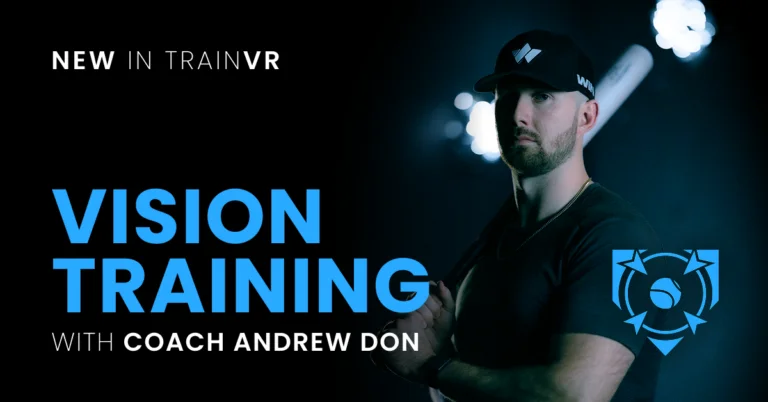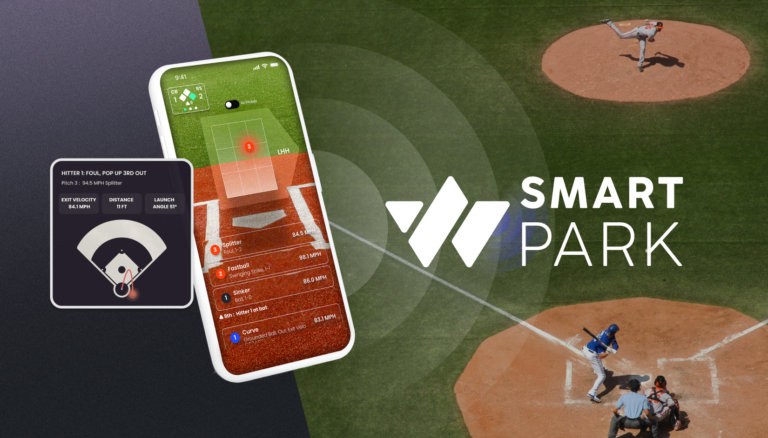For older hitters, see here for the best drills to help 11-12 year olds. Click here for the best drills for 7-8 year olds. Click here for an overview of WIN Reality’s age-by-age curriculum.
As youth players advance to 9 and 10-year-old baseball, they face the significant challenge of adjusting to pitches thrown by other kids. Unlike the easy pitches from coaches, these young pitchers are still developing their skills and command while also trying to get the hitter out, making each at-bat more challenging. At this stage, it’s crucial to elevate their training to address these new demands involving timing and swing decisions. Youth baseball hitters must focus on developing skills during batting practice sessions that allow them to handle varying pitch locations and speeds while building their ability to compete, problem-solve, and self-correct.
The Short Answer: Our favorite hitting drills for 9-10 year olds are:
- Early Hover Drill
- Foot Strike Drill
- Top of the Zone Fastballs Drill
- High/Low Drill
- Wild Pitcher Drill
- Simulated At Bats
Hitting Skills for 9-10 Year Olds to Focus On
For 9 and 10 year olds, loading up properly, getting into a launch position on time, and removing unhittable pitches from swing decisions are the key things to focus on for their hitting development. At this age, making practicing enjoyable is as crucial as improving skills. Young players need to love the game to stay motivated and eager to improve. Whether using batting tee drills, front toss, competitions, or game-like scenarios, the aim is for kids to build essential hitting skills and learn how to compete while having fun and enjoying practice. When young players enjoy the process, they stay engaged and are more likely to invest the effort needed for long-term development.
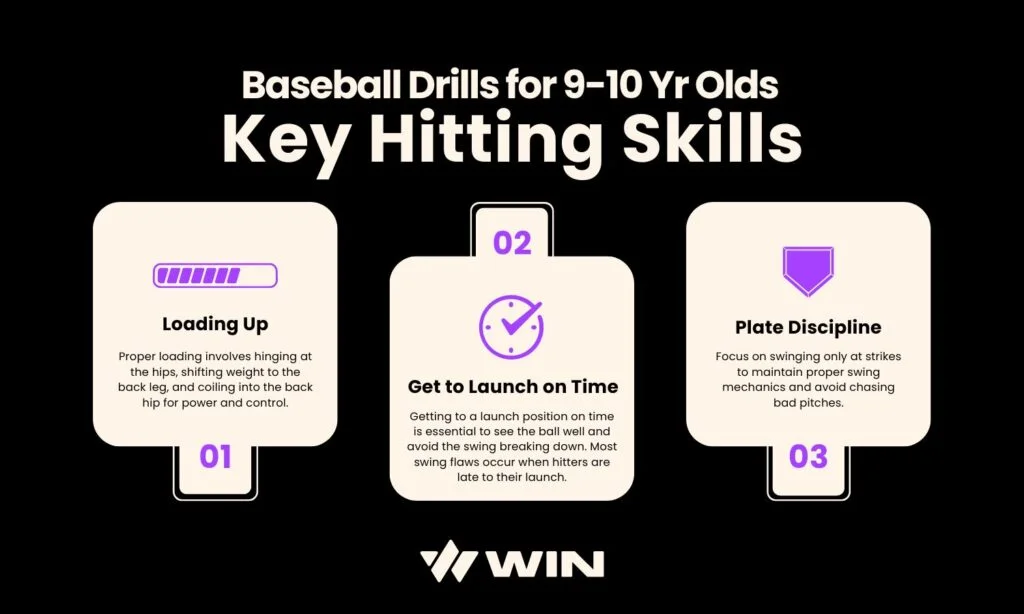
With that in mind, here are the key skills to focus on for young hitters:
How to Load Up
Now that the pitchers they face are their peers and are actively trying to get hitters out, it’s crucial for hitters to maintain control during their load. Loading properly enables hitters to create power and adjust to various pitch locations and speeds, especially as they might start encountering changeups. A good load involves the hitter hinging at the hips, shifting their weight into the back leg, and coiling up into their back hip. This should feel natural and allow the hitter to gain control and create power from their lower half.
Getting to a Launch Position on Time
A key aspect of hitting at this age is getting to a launch position on time. Since pitchers are now actively trying to get hitters out, it’s essential for hitters to be in a good position to get a swing off on time. This helps them see the ball well, make good swing decisions, and put their best swing on the ball. Most swing flaws occur when youth hitters are late getting into a launch position. When this happens, the hitter usually over-compensates for being late and the swing breaks down.
Removing Unhittable Pitches from Swing Decisions
Building on the previous point, another major cause of swing breakdowns is swinging at pitches that aren’t hittable. When hitters chase pitches well outside the strike zone, they disrupt their normal swing mechanics. Now that kids—who likely lack command–are pitching and are trying to get hitters out, hitters will see fewer pitches that are easy to drive and often see many uncompetitive pitches. While remaining aggressive is important, hitters must remain disciplined and focus on swinging only at strikes and pitches they can put a good swing on.
While players are developing these foundational skills, here’s a short guide for parents and coaches on what to look for in hitters at this age and what not to be concerned by:
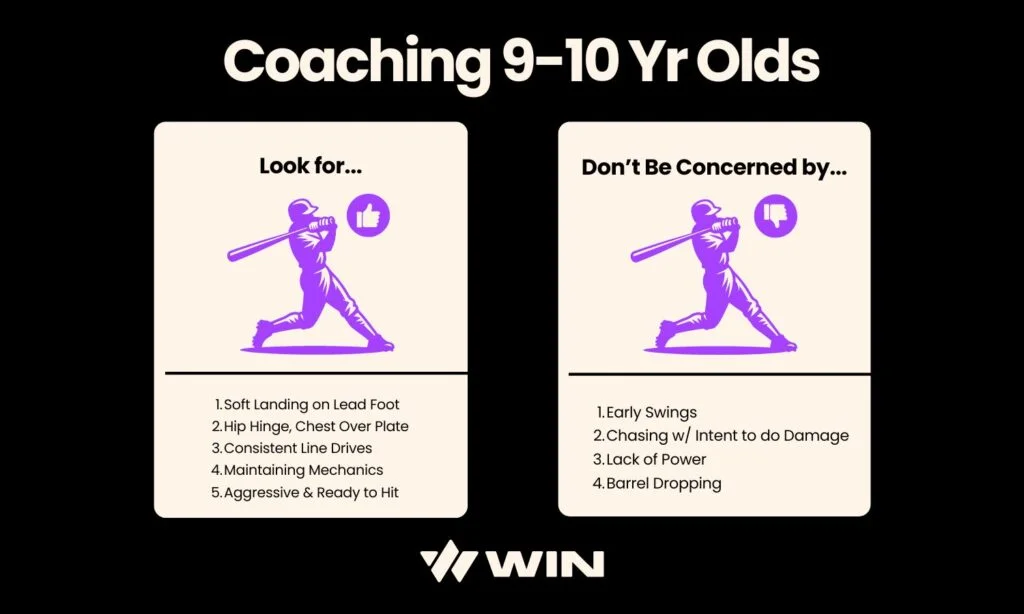
What to look for:
- The hitter is landing soft on their lead foot with the knob of the bat pointed at the catcher. Emphasize landing on the big toe.
- The hitter is staying in a hip hinge, keeping their chest down over the plate when they go to swing.
- Hitters are taking consistent quality swings, trying to hit line drives and not just looking to touch the ball.
- Hitters stay in their normal swing mechanics with the pitches they are swinging at. Hitters can expand the zone if they can take a quality swing.
- Make sure that the hitter is maintaining their aggressiveness and stay ready to hit. This typically happens when they face a wild pitcher and receive multiple balls in a row.
What not to be concerned by:
- The hitter is taking quality swings but they are early
- Don’t worry about the hitter being overly aggressive as long as there is intent to do damage behind the swing and the pitches are hittable
- If the hitter is not hitting for a ton of power but they are squaring the ball up
- The barrel dropping at contact due to a lack of strength
The Best Hitting Drills for 9-10 Year Olds
The most effective drills for players at this age are those that reinforce hitters getting into good positions to hit on time. It’s also important to challenge them to use their athleticism to solve problems. As they face their peers as pitchers for the first time, they must learn to compete against pitchers trying to get them out and make smart swing decisions. This can be achieved by incorporating various environments, competitions, or game-like scenarios, which keep practice fun, engaging, and stimulating while improving their skills.
Here are fun baseball drills for 9 and 10 year olds to do:
Early Hover Drill
The Early Hover Drill is perfect for hitters who struggle with being on time and ready to hit. This drill places an emphasis on gaining more control with their back hip during the forward move. Hitters will be working on their ability to maintain good posture and their ability to stay behind the ball.
Foot Strike Drill
The Foot Strike Drill is ideal for hitters who struggle with loading and getting into good positions to hit on time. It will teach proper swing sequencing by emphasizing firing from the center of the body first. This drill also focuses on maintaining good posture over the plate, helping hitters stay through the ball for cleaner contact.
Top of the Zone Fastballs Drill
The Top of the Zone Fastballs Drill is perfect to help hitters improve their ability to hit high pitches and faster speeds. It’s especially beneficial for players who have a steep path that prevents them from consistently squaring the ball up or tend to miss under the ball. Hitters will develop quicker, tighter entry into the zone which will allow them to catch up to faster pitching.
High/Low Drill
The High/Low Drill is a fun drill for hitters who struggle with adjusting to pitch sequences that go from up-to-down or down-to-up. Hitters will learn how to maintain a good hinge throughout the swing and use tilt to get on plane with the pitch instead of pushing out of their legs. This drill is a great precursor to being introduced to changeups and curveballs in the future.
Wild Pitcher Drill
This drill is great for hitters who struggle with staying ready to hit and become passive when they go up against wild pitchers. This is a common problem young hitters face. Hitters need to maintain their aggressiveness and stay ready to hit.
Simulated At Bats
Simulated At Bats are a great way to train timing, swing decisions, and even start getting hitters exposed to having a simple approach at the plate by implementing counts. This can be done by going full distance from the mound, or by short-boxing it at half the distance. At this age, if hitters are afraid of getting hit you can use Incredi-balls to encourage aggressiveness and minimize fear. Limit to 5-7 high-focus at-bats per session.
How WIN Reality Can Help Your Hitting Development
In conclusion, developing essential skills such as loading up properly, getting into a launch position on time, and removing unhittable pitches from swing decisions will help little leaguers progress toward becoming well-rounded hitters. In addition to all the drills mentioned, one of the most valuable things a young hitter can do is take plenty of swings and see as many pitches as possible. This allows hitters to build up experience in timing and swing decisions, which will take them a long way as they go further in the game.
To speed up your young hitters’ learning curve, consider integrating WIN Reality’s virtual reality training products into your practice routine. WIN Reality provides a cutting-edge platform that allows players to see pitches and take swings in a virtual environment, simulating real-game scenarios. This immersive experience helps hitters practice their timing, improve their pitch recognition, and build up their in-game experience in a controlled setting.Explore WIN Reality’s pricing options to find the best fit for your training needs and take your hitting practice to the next level. Embrace this innovative tool to support your young players’ development, boost their confidence, and watch them excel at the plate.
GET STARTED